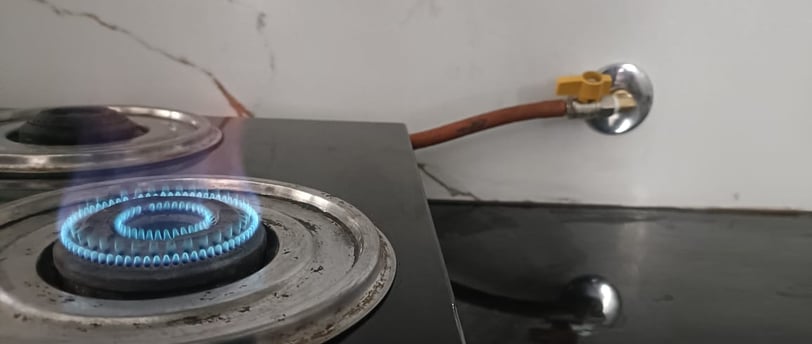The Future of Gas Pipeline Technology
As energy demands continue to rise and environmental concerns become more pressing, the future of gas pipeline technology is evolving rapidly. Innovations are not only enhancing the efficiency and safety of gas delivery systems but also aligning with sustainability goals. Here’s a look at some of the key trends and advancements shaping the future of gas pipeline technology:
PRIME GAS PIPELINE
10/2/20242 min read


1. Smart Pipeline Monitoring
Advancements in technology are enabling real-time monitoring of gas pipelines through the use of sensors and IoT (Internet of Things) devices. These smart systems can detect leaks, pressure changes, and other anomalies instantly, allowing for quick responses and minimizing safety risks. Predictive maintenance powered by data analytics can also help identify potential issues before they become critical, significantly reducing downtime and repair costs.
2. Advanced Materials
The development of new materials is improving the durability and reliability of gas pipelines. For instance, composite materials and high-strength steel can withstand higher pressures and resist corrosion better than traditional materials. These advancements lead to longer-lasting pipelines that require less frequent replacement and maintenance.
3. Hydrogen Integration
As the world shifts toward renewable energy sources, hydrogen is emerging as a viable alternative fuel. Gas pipelines are being adapted to transport hydrogen alongside natural gas, or even exclusively. This transition can support the decarbonization of the energy sector, as hydrogen has the potential to produce clean energy when used in fuel cells.
4. Renewable Natural Gas (RNG)
The integration of renewable natural gas—produced from organic waste through anaerobic digestion—into existing pipeline systems is gaining momentum. This shift allows for a more sustainable energy source that can reduce greenhouse gas emissions while utilizing the established infrastructure of gas pipelines.
5. Automated Construction and Maintenance
Robotics and automation are starting to play a significant role in the construction and maintenance of gas pipelines. Drones can be used for aerial inspections, while robotic systems can perform tasks like welding and pipe laying. These technologies can increase safety, reduce labor costs, and improve efficiency during installation and maintenance.
6. Data-Driven Decision Making
The use of big data analytics in managing gas pipeline operations is becoming increasingly common. Companies are leveraging data from various sources—such as weather patterns, energy consumption trends, and historical performance data—to make informed decisions that enhance efficiency, reduce costs, and improve safety.
7. Environmental Considerations
With rising environmental awareness, the future of gas pipeline technology is likely to prioritize eco-friendly practices. This includes minimizing land disruption during installation, using sustainable materials, and adopting practices that reduce the carbon footprint of gas transport.
8. Regulatory Advancements
As gas pipeline technology evolves, so too do the regulations governing its operation. Future regulations may focus on stricter safety standards, enhanced reporting requirements, and greater transparency in pipeline management, pushing companies to adopt the latest technologies to comply.
Conclusion
The future of gas pipeline technology is bright, with numerous innovations aimed at improving safety, efficiency, and environmental sustainability. As the industry continues to evolve, it’s crucial for companies to stay informed and adopt these advancements to meet the changing needs of consumers and the planet. By embracing these technologies, we can create a more sustainable energy future while ensuring the safe delivery of gas to homes and businesses.
Prime Gas Pipeline Installation Services in Hyderabad
Best gas pipeline installation service in Hyderabad Secunderbad ensuring safety.
Contact Us Now
PrimeGasline28@gmail.com
+91 9666106900
© 2024 Prime Gas Pipeline Service. All Rights Reserved
Our Services
Gas Pipeline Installation
Gas Pipeline Repairs
Gas Appliance Service
Prime Gas Pipeline Service is dedicated to providing superior gas pipeline installation solutions efficiency. Serving residential properties with expertise and precision, we ensure that every project is completed to the absolute satisfaction of all our clients.
Our Gas Pipeline Installation Service Locations In Hyderabad & Secunderabad
Gas Pipeline fitting In Hyderabad & Secunderabad, Gas Pipeline fitting In Pragathi Nagar, Gas Pipeline fitting In Bachupally, Gas Pipeline fitting In KPHB, Gas Pipeline fitting In Panjagutta, Gas Pipeline fitting In Ameerpet, Gas Pipeline fitting In Sai Nagar, Gas Pipeline fitting in Moosapet, Gas Pipeline fitting In Kukatpally, Gas Pipeline fitting In Nizampet, Gas Pipeline fitting In Miyapur, Gas Pipeline fitting In Lingampally, Gas Pipeline fitting In Patancheru, Gas Pipeline fitting In Secunderabad, Gas Pipeline fitting In Banjarahills, Gas Pipeline fitting In Jubilee Hills, Gas Pipeline fitting In Madhapur, Gas Pipeline fitting In Hitech City, Gas Pipeline fitting In Kondapur, Gas Pipeline fitting In Gachibowli, Gas Pipeline fitting In Nallagandla, Gas Pipeline fitting In Tellapur, Gas Pipeline fitting In Manikonda, Gas Pipeline fitting In Chintal, Gas Pipeline fitting In Jeedimetla, Gas Pipeline fitting In Alwal, Gas Pipeline fitting In Malkajgiri, Gas Pipeline fitting In Sainikpuri, Gas Pipeline fitting In Ecil, Gas Pipeline fitting In Tarnaka, Gas Pipeline fitting In Uppal, Gas Pipeline fitting In LB Nagar, Gas Pipeline fitting In Dilsukhnagar.
